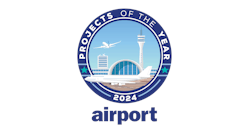First, please allow me to apologize. The Institute of Boggus Talk (IBT) has taken a bit of a hiatus over the past year.
That’s what happens when you try to offer course credit through this column. Unfortunately, the Accrediting Council for Independent Colleges and Schools (ACIC) ultimately passed on recognizing IBT as an accredited educational institution. It’s a shame, too, because the IBT has tackled many complex issues facing aviation today and is regularly sought after by think tanks to determine, what’s next? Certainly, the ACIC has made a huge mistake as we are here to tackle one of the biggest issues facing airports and airline travelers today: Getting off the plane.
Have you tried to get off a plane recently? Odds are if you’ve boarded an aircraft then you’ve probably tried to get off the plane as well. It’s hard enough for the lucky few in first/business class, but it only gets more difficult the deeper in coach you get.
I was stuck flying in the back of a 757 to Washington-Dulles a few months ago for a two-hour meeting – the IBT wanted to make its case to the Accrediting Council in person after our calls and emails were only answered with replies of “What is this?” and “Please stop contacting us.” By the time we landed and deplaned, we had missed our accreditation meeting and our return flight was already boarding.
While we can’t offer course credit yet, the IBT feels that there are several lessons passengers, airlines and airports can learn to help everyone get where they’re going a bit faster.
Stay Seated
Most every flight I have ever been on – and I’ve been on too many – ends the same way. The plane pulls up to the jet bridge, the pilot turns off the “Fasten Seatbelts” light, and the aisle of the plane fills to capacity before the cabin door even opens.
Where do these people who stand up and jump into the aisle think they’re going? And what benefit to they receive?
Even with the crowded aisle, most times passengers let those in the row just in front and beside them to exit first. Those who jumped up when the flight landed and jockeyed for position end up with no benefit whatsoever, other than blocking ne’er-do-wells from the rear from encroaching on the natural order of exiting.
To ensure everyone stays seated until it’s time for them to disembark, the pilots and flight attendants will now have controls to magnetically release the seatbelt fastening assembly by row.
Perk Up
Airlines have been the leaders in finding new ways to separate passengers from their money. Many of them offer early boarding packages as a perk for frequent flyers or an add-on cost for those looking to get on the plane early.
But think about it: Would you rather pay to get on the plane first or get off the plane first? I think the value of being one of the first people to deplane could be worth at least $10 -- $20 especially if you really need to get to that terminal restroom or have a hot connection to make.
For our pilot program, let’s say passengers can pay $30/row (that’s just $10/person!) through and app like Venmo, to the airline, and viola your row is released, in the order you paid, first at the gate.
You get off the plane early. The airlines make a little more money and they can then cut back on the incessant credit card offer announcements. Everyone wins!
Clear the Way
However, just because you make it off the plane doesn’t mean you’ve made it. These days, jet bridges are starting to look like a hoarder’s storage shed and can serve as an added obstacle course between you and your destination.
The culprit? It’s not just gate-checked bags.
In fact, a handful or more of airport wheelchairs can often be queued up near the cab of the jet bridge, often with no one to sit in or help push them along. As a result, these wheelchairs, along with passengers queuing up for their gate checked baggage, crowd deplaning passengers, restricting the emergency egress from the airplane, and further compound waiting for gate checked bags to be returned to passengers.
To be clear, these wheelchairs are important and necessary, but we must find a better way to store them. The IBT proposes using RV technology and creating some side-out storage on the jet bridge. Picture an RV with the living area or bedroom the slides out to create a larger space. If we built these into our jet bridges, on the side opposite the aircraft its boarding we would create a pocket to store wheelchairs in. Oh, I know there’s the “how do we retract the jet bridge” comment, but come on, how many times have you retracted a jet bridge unless a hurricane is coming? With a touch of a button, the bump-out can be retracted back into the jet bridge, when not in use allowing the tunnel to be retracted. What’s not to love? You listening JBT?
If we can come together and make these changes, airplanes and airports will be more orderly. We may even save a few minutes, too.





